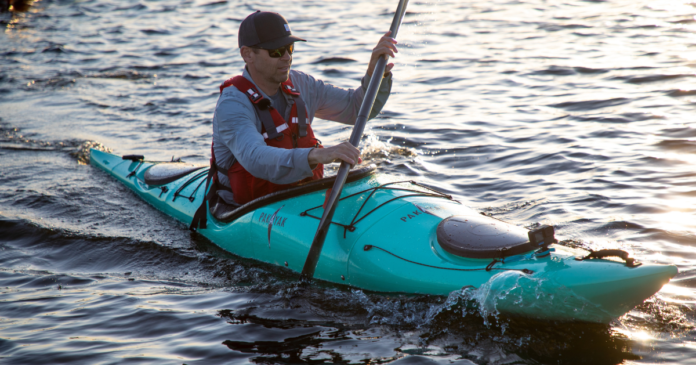I've been looking forward to testing out the Pakayak Bluefin 142 for a while now. And judging by the number of requests from PaddleTV subscribers, it looks like a lot of people want the low-down on this unique kayak. The Bluefin 142 claims to combine portability with performance. That's a rare combo, and one that I'll happily be the judge of. Let's comb through some of the specs and features and then I'll answer this key question, as well as many others that you guys have about this boat.
ABOUT THE PAKAYAK BLUEFIN 142 KAYAK
Retail Price: $1,995 USD
Length: 14′ 2″
Width: 24″
Weight: 59 LBS (27 KG)
Max Capacity: 300 LBS (136 KG)
Best Use: TOURING
The Bluefin 142 uses a tongue-and-groove connection, with stainless steel sealing latches and silicone gaskets for waterproofing. It comes with a zippered carry bag that has wheels and backpack straps. Like most touring kayaks, the Pakayak comes with deck bungees and perimeter lines. There are two hatches that access separate waterproof compartments. In the cockpit, you've got a back band, a contoured foam seat, and adjustable foot pegs. One last note, the kayak comes ready for a rudder to be installed, if that's what you decide is best for you.
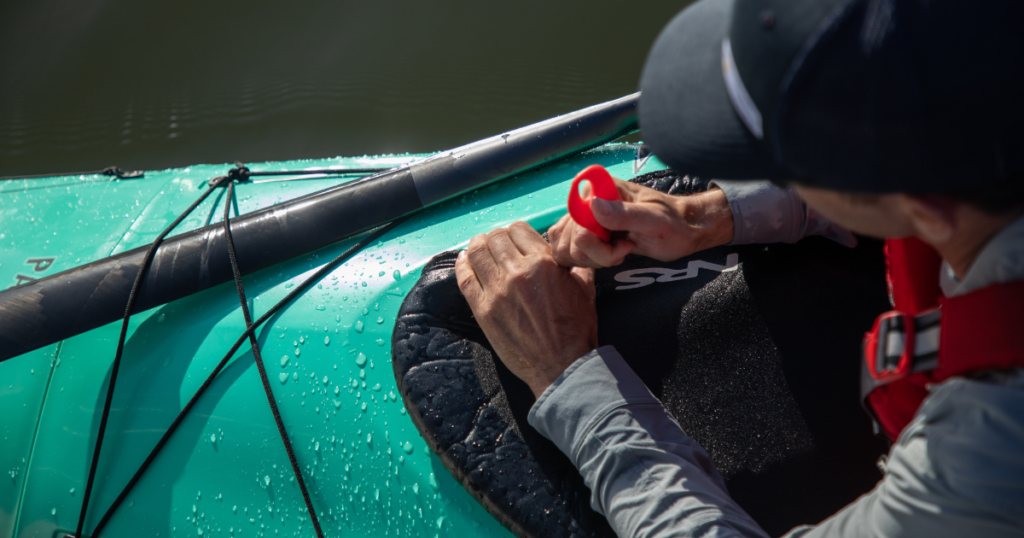
Where is Pakayak made?
The Pakayak Bluefin 142 is designed, molded, and assembled in the United States.
How portable is the Pakayak Bluefin 142?
For what you get with the Bluefin 142, the fact that it packs down into an equipment bag is pretty awesome. Being able to fit a 14-foot hard-shelled kayak into something that you can wheel around makes portability relatively easy when compared to a standard kayak. Just be aware, it is much heavier than other portable/inflatable kayaks out there.
How heavy is the Bluefin 142 kayak?
The Pakayak Bluefin 142 is 59-pounds, and probably more like 65-pounds with the pack. So it's not a light kit to move around, especially compared to other portable models. Again, for what's included, and the quality of the kayak you're getting, any kind of enhanced portability is impressive. You just won't want to carry this long distances.
Is the Bluefin 142 kayak easy to assemble?
Absolutely. I was blown-away by how easily this thing came together. Pakayak claims an assembly time of under 3-minutes, and that's about exactly how long it took on my first try. Not only did it assemble quickly and easily, but the way it went together inspired confidence for how it would hold up on the water.
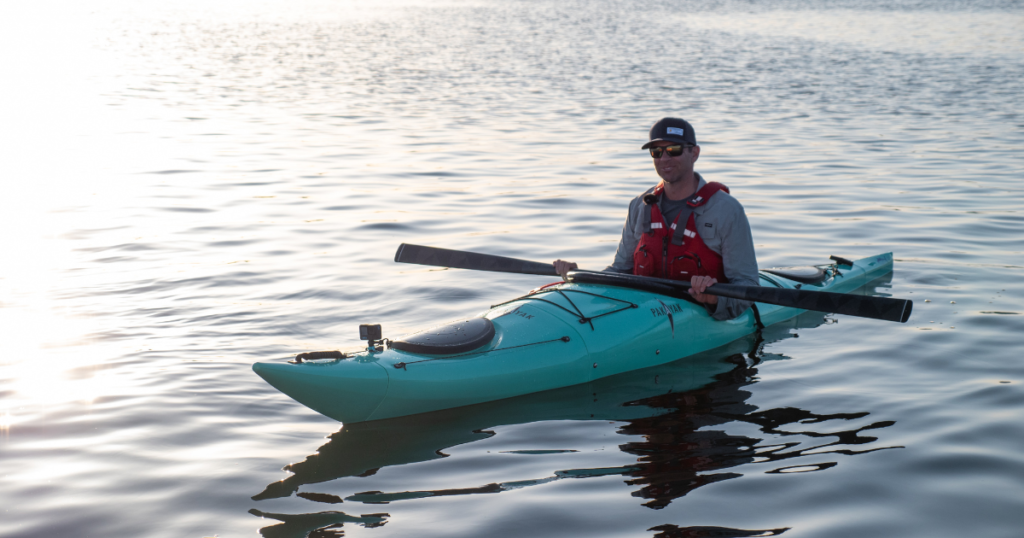
Is the Pakayak Bluefin comfortable?
Typically, portable kayaks sacrifice a bit of comfort compared to their standard rivals. Does that hold true for the Payakak Bluefin 142? You betcha. But that's not to say it's an uncomfortable kayak. It simply pales in comparison to a classic hard-shell of the same class. However, the contour foam seat did its job. After 2 hours on the water my butt wasn't sore at all. The back band was passable, but I did start to notice the straps towards the end. I think that's more so because I was playing around with the edges so much. Since this kayak doesn't have hip pads, I was leaning soley into the straps to catch my shifting weight. If you were just casually paddling, then you might not experience the same result. They did provide great support though!
In terms of space, I'm 6-feet, 2-inches tall, with fairly long legs. I was comfortable, lengthwise, but I am also probably the max height for this kayak. I didn't even use the footpegs, as my feet were pressed right up against the bulkhead. That being said, there is lots of room around the cockpit, which I appreciated.
How stable is the Bluefin 142 kayak?
At 24-inches wide, the Bluefin 142 is designed with performance in mind. But even so, I felt it had solid primary stability (i.e. how the kayak feels when you're just sitting flat). There were no unexpected wobbles or anything during my paddle test. The secondary stability (how it feels when putting the kayak on edge) is decent, but not exceptional. What that tells me is that the Bluefin 142 was designed primarily for speed, rather than aggressive edging or other high-paddling performance in rough conditions. It's not that it can't do that, it's just not the focus. Every kayak has to pick a lane, and this one aims for portability and paddling efficiency.
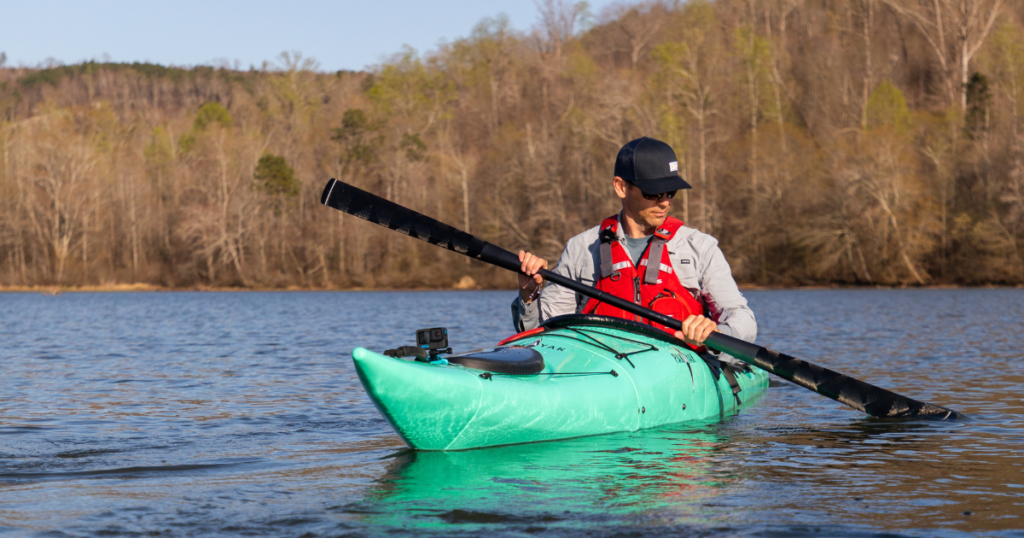
Is the Pakayak Bluefin 142 a touring kayak?
It certainly is! If I didn't assemble the Pakayak Bluefin 142 myself and just plopped in for a spin, I would have thought I was in a normal sea kayak. It doesn't feel like a standard, portable/recreation design. However, it is inescapable that portability and performance naturally detract from each other. Relative to other portable kayaks, the Pakayak is surprisingly efficient. However, it's not quite as fast or maneuverable as classic touring kayaks in the same price range. And that's just because of basic physics. I could tell that certain aspects of its design had to be that way in order to facilitate assembly. But overall, it strikes a great balance. It's a perfectly portable kayak (albeit a heavier one) and it's well-suited for flat-water touring. Even without a skeg, it tracks wonderfully, it accelerates nicely, and it maintains a commendable pace. That combined with its stowage capabilities and you've got yourself a great boat for getting from A to B, across a moderate range of conditions.
Who is the Bluefin 142 kayak for?
The Bluefin 142 is an excellent choice for anyone who wants a solid touring kayak but also needs it to be portable (whether because of lack of storage, suitable means of transportation, or simply because they want something that can pack and drag/carry). This boat will be great for longer distance adventures, especially ones that don't involve exceptionally rough conditions. I would feel comfortable taking the Bluefin 142 into Class 1 or Class 2 rapids, but I wouldn't push it further unless I was committed to getting wet. The main reason for that is that there aren't any thigh hooks to keep you locked in. And if you did flip, it would be harder to roll without that grip. The back deck is also relatively high in this kayak, and so it would require more of a modified roll. Not impossible, just not ideal. On that note, prospective Pakayak owners should make sure they have a high back, recreational lifejacket, as my standard sea kayaking vest kept getting pushed up by the deck, which meant a lot of readjusting.
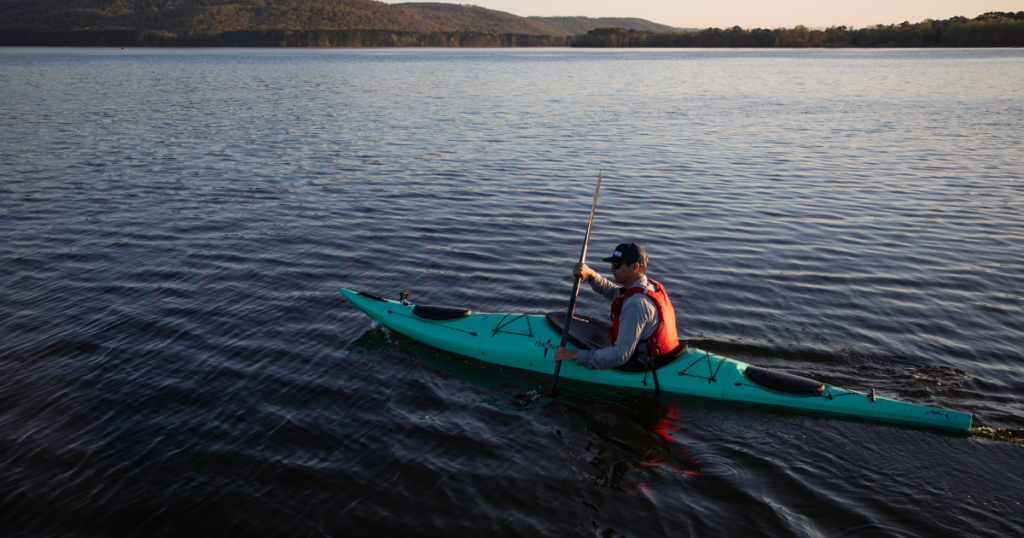
Is the Pakayak Bluefin 142 worth it?
$1,995 (USD) is not a cheap kayak by any stretch of the imagination. However, folks familiar with the range of high performing touring kayaks will know that the price tags can shoot well north of this. Plus, portability always comes with an added cost, especially when the performance quality is so well preserved in the process. If portability and performance/touring capabilities are important to you then yes, the Pakayak Bluefin 142 is well worth it. Dare I say, it's one of the best!
Pakayak vs Oru Comparison
The Pakayak Bluefin 142 and the Oru Kayak Inlet are both portable designs, but otherwise showcase different strengths. The Oru utilizes a slick, origami-inspired assembly. This makes for a much lighter and, therefore, more transportable kayak. However, it's not as fast as the Pakayak, nor does it have the stowage/touring capabilities. On the other hand, Pakayak does excel in terms of paddling efficiency, and it has two waterproof compartments for multi-day trips, but this stems from a beefier package that isn't as easy to lug around. For more information about the Oru Kayak Inlet, check out my full review.
I'm so glad all my supporters encouraged me to try the Bluefin 142. I hope you enjoyed this article as much as I enjoyed investigating it. For more information, check out my gear reviews, tips, and adventures on PaddleTV.



